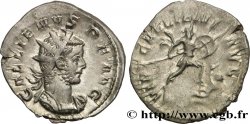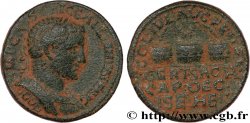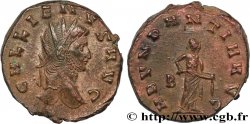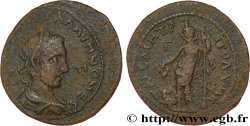brm_315402 - GALLIENUS Antoninien
Not available.
Item sold on our e-shop (2014)
Price : 275.00 €
Item sold on our e-shop (2014)
Price : 275.00 €
Type : Antoninien
Date: c. 253-255
Mint name / Town : Viminacium
Metal : billon
Millesimal fineness : 250 ‰
Diameter : 19,5 mm
Orientation dies : 12 h.
Weight : 3,03 g.
Rarity : INÉDIT
Coments on the condition:
Exemplaire sur un flan ovale et parfaitement centré. Portrait quasi SUP bien venu à la frappe et joli revers rare et recherché ! Patine grise
Obverse
Obverse legend : IMP GALLIENVS P AVG.
Obverse description : Buste lauré, drapé et cuirassé de Valérien Ier à droite, vu de trois quarts en arrière (A2).
Obverse translation : “Imperator Gallienus Pius Augustus”, (L’empereur Gallien pieux auguste).
Reverse
Reverse legend : CONCO-R LEGG.
Reverse description : Concordia (la Concorde) drapée assise à gauche, tenant une patère de la main droite et une double corne d’abondance de la main gauche.
Reverse translation : “Concordia legionarum”, (La Concorde des légions).
Commentary
Type complètement inédit pour Gallien ! Monnaie de la plus grande rareté que nous proposons pour la première fois à la vente.








 Report a mistake
Report a mistake Print the page
Print the page Share my selection
Share my selection Ask a question
Ask a question Consign / sell
Consign / sell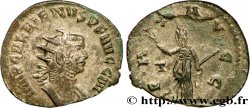
 Full data
Full data